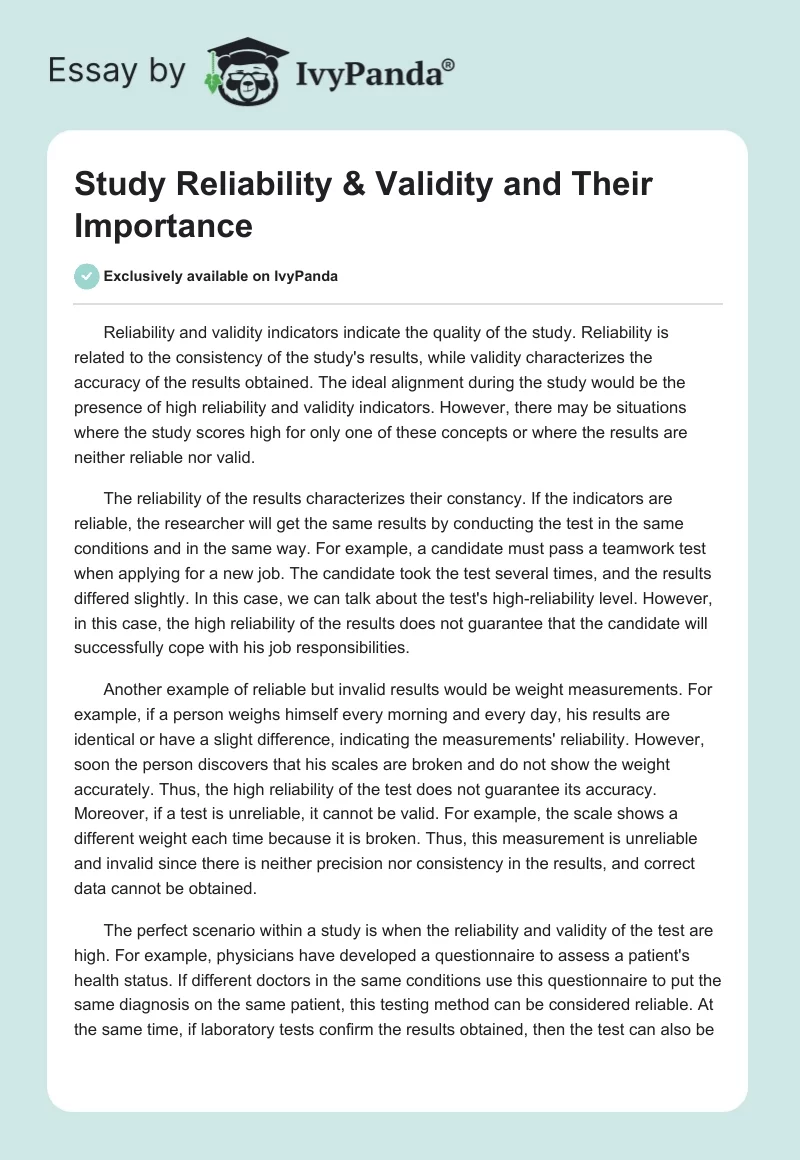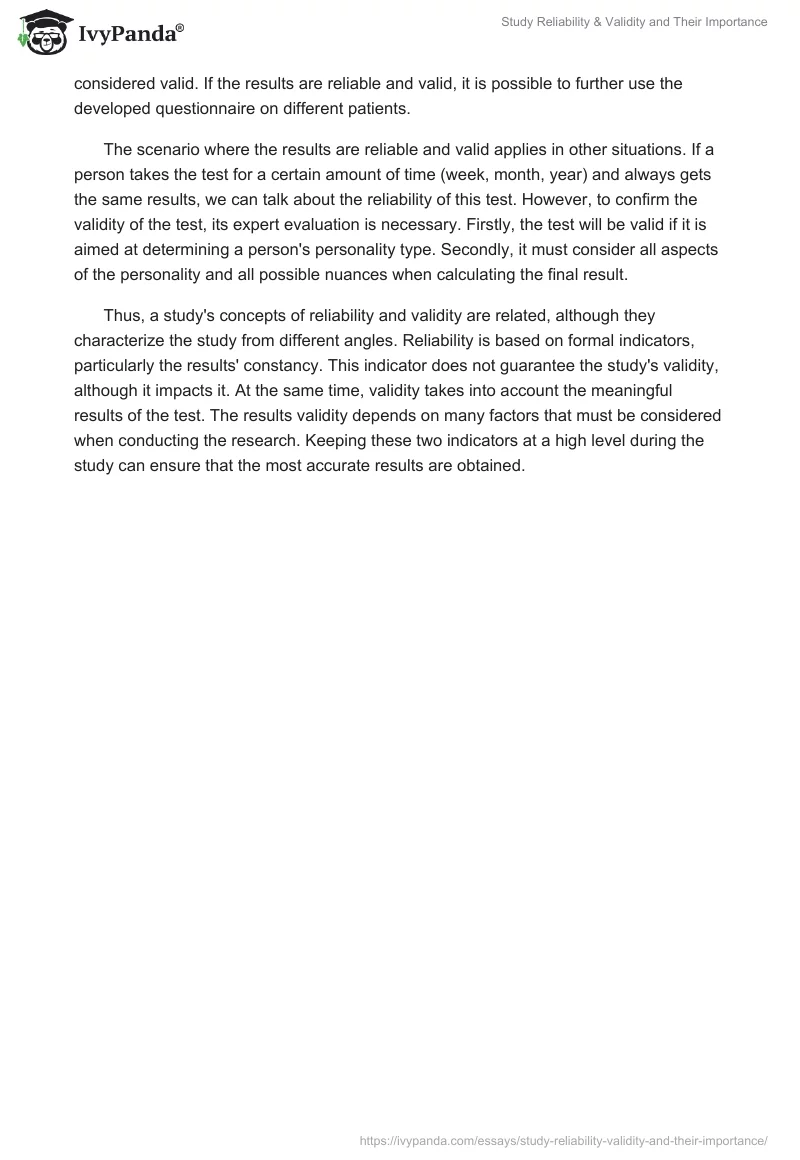Reliability and validity indicators indicate the quality of the study. Reliability is related to the consistency of the study’s results, while validity characterizes the accuracy of the results obtained. The ideal alignment during the study would be the presence of high reliability and validity indicators. However, there may be situations where the study scores high for only one of these concepts or where the results are neither reliable nor valid.
The reliability of the results characterizes their constancy. If the indicators are reliable, the researcher will get the same results by conducting the test in the same conditions and in the same way. For example, a candidate must pass a teamwork test when applying for a new job. The candidate took the test several times, and the results differed slightly. In this case, we can talk about the test’s high-reliability level. However, in this case, the high reliability of the results does not guarantee that the candidate will successfully cope with his job responsibilities.
Another example of reliable but invalid results would be weight measurements. For example, if a person weighs himself every morning and every day, his results are identical or have a slight difference, indicating the measurements’ reliability. However, soon the person discovers that his scales are broken and do not show the weight accurately. Thus, the high reliability of the test does not guarantee its accuracy. Moreover, if a test is unreliable, it cannot be valid. For example, the scale shows a different weight each time because it is broken. Thus, this measurement is unreliable and invalid since there is neither precision nor consistency in the results, and correct data cannot be obtained.
The perfect scenario within a study is when the reliability and validity of the test are high. For example, physicians have developed a questionnaire to assess a patient’s health status. If different doctors in the same conditions use this questionnaire to put the same diagnosis on the same patient, this testing method can be considered reliable. At the same time, if laboratory tests confirm the results obtained, then the test can also be considered valid. If the results are reliable and valid, it is possible to further use the developed questionnaire on different patients.
The scenario where the results are reliable and valid applies in other situations. If a person takes the test for a certain amount of time (week, month, year) and always gets the same results, we can talk about the reliability of this test. However, to confirm the validity of the test, its expert evaluation is necessary. Firstly, the test will be valid if it is aimed at determining a person’s personality type. Secondly, it must consider all aspects of the personality and all possible nuances when calculating the final result.
Thus, a study’s concepts of reliability and validity are related, although they characterize the study from different angles. Reliability is based on formal indicators, particularly the results’ constancy. This indicator does not guarantee the study’s validity, although it impacts it. At the same time, validity takes into account the meaningful results of the test. The results validity depends on many factors that must be considered when conducting the research. Keeping these two indicators at a high level during the study can ensure that the most accurate results are obtained.


